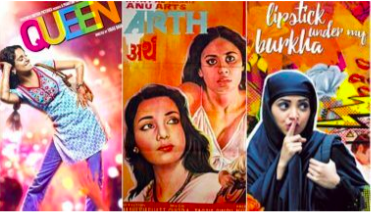Introduction:
Bollywood, the heart of Indian cinema, has been a powerful force in shaping cultural narratives, including how women are portrayed on screen. For decades, the depiction of women in Indian films reflected societal norms, where female characters were often confined to traditional roles as mothers, wives, or love interests. However, in recent years, there has been a significant shift, with Bollywood embracing more diverse, empowered, and nuanced representations of women.
Early Portrayals: The Stereotypical Heroine
In the early days of Bollywood, female characters were often cast in subservient roles. Women were depicted as the dutiful wife, the loving mother, or the innocent girl-next-door, with their stories largely revolving around the male protagonist. Films like Mughal-e-Azam (1960) and Mother India (1957) showcased powerful women but largely emphasized their sacrifices and sufferings, reinforcing traditional values of womanhood.
In the 1970s and 80s, Bollywood saw the rise of the “angry young man” trope, with women often playing the roles of love interests or background characters to the male hero. Even then, female characters were rarely given the space to be more than emotional crutches or objects of desire.
The Feminist Turn: Breaking Stereotypes
The late 1990s and early 2000s marked a turning point in Bollywood’s portrayal of women. Actresses like Sridevi and Madhuri Dixit brought a mix of strength, grace, and versatility to their roles. Films like Chandni (1989) and Hum Aapke Hain Koun (1994) gave women more screen time and narrative agency, even though many roles were still tethered to romance or family drama.
However, the feminist wave truly began to make its mark with the emergence of actresses like Tabu, Vidya Balan, and Kareena Kapoor in roles that broke traditional molds. Vidya Balan’s Kahaani (2012) and The Dirty Picture (2011) stand out as examples where women took charge of the narrative, owning their desires, struggles, and power.
Contemporary Bollywood: Empowered Women and Realistic Stories
The past decade has seen a remarkable evolution in the representation of women in Indian cinema. Filmmakers have begun telling stories where women are not just eye candy or sidekicks but protagonists with depth, ambition, and agency. Movies like Queen (2013), Piku (2015), and Raazi (2018) showcase female characters who defy societal expectations, taking control of their lives and decisions. These films portrayed women as self-reliant, driven, and unapologetic about their choices.
More recently, actresses like Deepika Padukone, Taapsee Pannu, and Alia Bhatt have played complex, layered characters in films such as Chhapaak (2020), Thappad (2020), and Gangubai Kathiawadi (2022), tackling issues ranging from gender-based violence to patriarchy and women’s empowerment.
The Shift in Storytelling: Beyond Romance
What sets this new era apart is that women’s stories are no longer confined to the romantic or domestic sphere. Filmmakers are increasingly addressing topics like mental health, female desire, and career ambitions. Movies like Lipstick Under My Burkha (2017) and Tumhari Sulu (2017) delve into the everyday struggles and triumphs of women from different walks of life, offering a more realistic portrayal of their challenges and aspirations.
Challenges Remain: Objectification and Underrepresentation
Despite these advancements, challenges persist. The objectification of women in item numbers and glamorous roles still remains an issue, with actresses often judged by their appearance rather than their talent. Moreover, mainstream cinema still struggles to represent women from marginalized communities—be it based on caste, class, or sexuality. While some films have ventured into these spaces, such as Article 15 (2019) or Aligarh (2016), there is still a long way to go in terms of inclusivity.
The Way Forward: Intersectionality and Representation
As Bollywood continues to evolve, there is a growing call for intersectionality in its portrayal of women. Stories of women from different regions, backgrounds, and identities are becoming more visible, though not at the pace many would hope for. The rise of OTT platforms has also allowed for more diverse narratives, giving women-centric films and female filmmakers a platform to tell their stories without the constraints of commercial cinema.
Conclusion:
The portrayal of women in Bollywood has come a long way from the stereotypical roles of the past. Today, female characters are stronger, more diverse, and more reflective of real-world complexities. However, there is still a journey ahead. The future of Indian cinema will depend on how inclusively it can portray the myriad experiences of women, embracing both their vulnerabilities and strengths, and offering a more authentic lens on womanhood.


